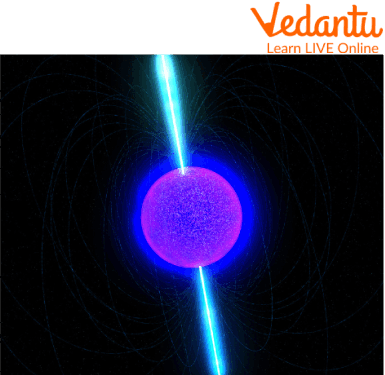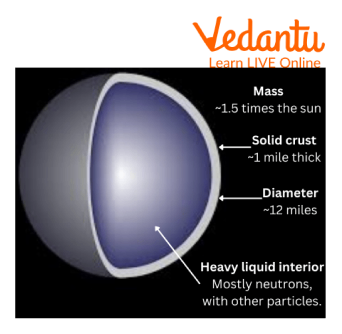




Overview of Neutron Stars
Neutron stars are the densest stars in existence. They are so dense that one teaspoon of material from its centre would have the same mass as our entire Earth! They are formed when giant stars go supernova, which is when they collapse, and their centre can no longer support the weight of all the material it's composed of. This article explores how neutron stars form, their makeup, and a few key things you should know about them.
What is Neutron Star?
Any member of a class of highly dense, compact stars assumed to be predominantly made of neutrons is a neutron star. The average diameter of a neutron star is 20 km (12 miles). Their masses range from 1.18 to 1.97 times those of the Sun, with the majority being 1.35 times the Sun. They have exceptionally high mean densities, almost 1014 x that of water.
This is similar to the density of an atomic nucleus, and one may think of a neutron star as a massive nucleus. Where pressure is greatest, at the core of the star, it is not known for sure what is there. Most of the particles in the different layers are neutrons, likely in a "superfluid" condition.

Neutron Star
Properties of Neutron Stars
It has a small diameter, high density, powerful gravity, and a powerful magnetic field are the four main characteristics of neutron stars. Neutron stars are typically no larger than a city, with diameters of about a few kilometres. However, they are, at the minimum, 40% bigger than our Sun! Neutron stars have a density of around 1014 (100 trillion) fold greater than that of water. Neutron star material can carefully weigh up to one billion tonnes in a teaspoonful.
A neutron star's gravitational pull is inversely proportional to its squared radius and inversely proportional to its mass. Neutron stars, therefore, have extremely powerful gravitational fields. The surface of a neutron star is extremely smooth and spherical because all of the atoms are compressed as tightly as they can be. You would immediately disintegrate into elementary particles if you attempted to travel to a neutron star.

The Properties of a Neutron Star
Neutron Star Weight
Only big stars, defined as those weighing between 4 and 8 solar masses, can give rise to neutron stars. During a supernova, the core of these huge stars is frequently just as large as the Sun, if not bigger. The core alone needs to be between 1.3 and 2 percent of the weight of the Sun in order to fall down far enough to create a neutron star.
Neutron Star Collision
The collision of two neutron stars causes a kilonova. A kilonova is produced when two highly dense cores of a dead star collide. This is the collision's dazzling afterglow, composed of heavy elements in the decay process.
For a very long time, astronomers believed that heavy elements and precious metals were ejected by supernovae. However, in recent years, scientists have researched supernovae and discovered that there isn't enough density to support the number of these elements that are present in the world. This has disproved the idea. Scientists then came up with another hypothesis: Kilonovae is, in fact, in charge of dispersing these heavier materials throughout the cosmos.
Summary
A neutron star is a tiny, compact star almost entirely composed of neutrons. They are tiny stars with a radius of approximately 11–11.5 kilometres. They are roughly twice as massive as the Sun. They are the tiniest and densest stars that the universe is known to contain. They are all left of a massive star that had a supernova explosion. The star's density is comparable to that of an atom's nucleus. It was once believed that neutron stars were too faint to be seen. We are wrapping up this article with this information about neutron stars.
FAQs on Properties of Neutron Stars
1. Can you touch a drop of a neutron star?
No. You could not survive any form of a close encounter with a neutron star or drop of a neutron star due to its powerful gravitational field and extreme temperature.
2. What would occur if a teaspoonful of a neutron star was dropped?
Because of the extreme pressures, the density is quite high. So because pressures aren't great enough to collapse neutron star material into its dense state, if we were to transfer a teaspoonful of it to earth, it would quickly expand.
3. Is the sun hotter than a neutron star?
No, more heat is generated by neutron stars. But when they develop and eventually cool, they are extremely hot. The Sun's surface temperature is roughly 9,900 degrees Fahrenheit, but the neutron stars we can view have an average temperature of about 1.8 million degrees.









